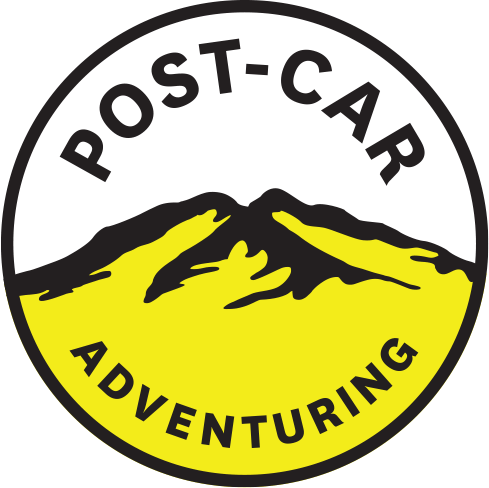Adventure Planning
Have a place you want to go?
If we've already covered it, take a look and build from our plans. If not, you can oftenfind transit information quickly by calling your destination or checking its website.
Get Creative!—grab a trail map, forest map, bike touring map, or basic atlas, and start putting together an itinerary for getting there. You can get anywhere outside the city without a car—choose and plan trips that you know you'll enjoy rather than have to struggle through.
Planning a trip to any destination, particularly to a rural or backcountry one, requires a different kind of planning for a car trip. If you're a natural and passionate planner, post-car adventuring provides an opportunity to discover new places in the process. If you're not an avid planner, the trips on this site will help you get started.
Since schedules and the details of particular bus and train routes change, you will need to do a quick search online to confirm departure and arrival times. You should always double check with a given transit provider to make sure that a given line is running, will be there when you expect it to be, and that its stp locations have not changed. If you're traveling with a non-folding bicycle, make sure you get in line for the bus early enough to avoid being 'bumped' by other bikes.
Resources
Invisible Transportation: Hacking county bus systems
Nearly-invisible systems of reliable, efficient transportation connect small, rural communities in almost every county in the U.S. County bus systems are often easy to find online, and with a quick call to confirm schedules and routes, they are an essential tool for the post-car adventurer. If you are planning a trip, find a county map for your state and do a search for the counties you will be travelling to or through; search for the county’s name, and/or the name of the county’s biggest town or city, along with ‘bus’ or ‘transit’ or ‘transportation.’ You may have to manually click through a county government website until you find their transportation options--sometimes they hide them, but they are there. If you do not find any information online, look in a local phonebook under government services. We’ve used little-known, small scale county and local transit in rural California, northern Michigan, and southwestern New Mexico. With a little research, these systems enable one to go a little further on a bike trip, to get to the mountains in a weekend, to skip unattractive roads, to be dropped off at a trailhead. Most rural counties provide these transportation alternatives with a high degree of subsidization. Carrying touring, post-car travelers is one source of income and stability for these transit systems, so take advantage of them!
Riding Transportation with your bike
Post-car adventuring does not require that one have or ride a bicycle, and for some trips it is best not to take a bike even if you have one and would like to take it. However, for many trips the bicycle is often the best and only option besides hoofing it from a transit stop. In California it is usually possible to take bikes along as free and unreserved luggage on buses, trains, ferries, and subway systems. Even the smallest county bus systems equip their buses with two-slot front-loading bike racks. Amtrak California trains (the Capitol Corridor, San Joaquin, and Pacific Surfliner) allow bikes to ride unboxed and unreserved with connections to their thruway buses also accepting unboxed bicycles that can be stored in the luggage bays. We’ve taken bicycles on a large number of trips using major transit routes and very minor, county routes to make trips work.
The ability to take a bike on these systems opens many opportunities for exploration and travel in a weekend or several day trip that otherwise would not be possible. Yet ‘bikes on board’ travel is not as fluid or uniformly accessible as it should be. The biggest challenge to successful travel is the scarcity of space reserved for bicycles on buses and trains. Various advocacy organizations are working on the problem of ‘bumping’ (finding yourself without room for your bike and being left behind) on trains and buses by lobbying transit agencies to provide easy and transparent access for persons using bicycles as a part of their travels or commute. Find out more about how you can help lobby for more on-board bike space here (link to advocacy page).
